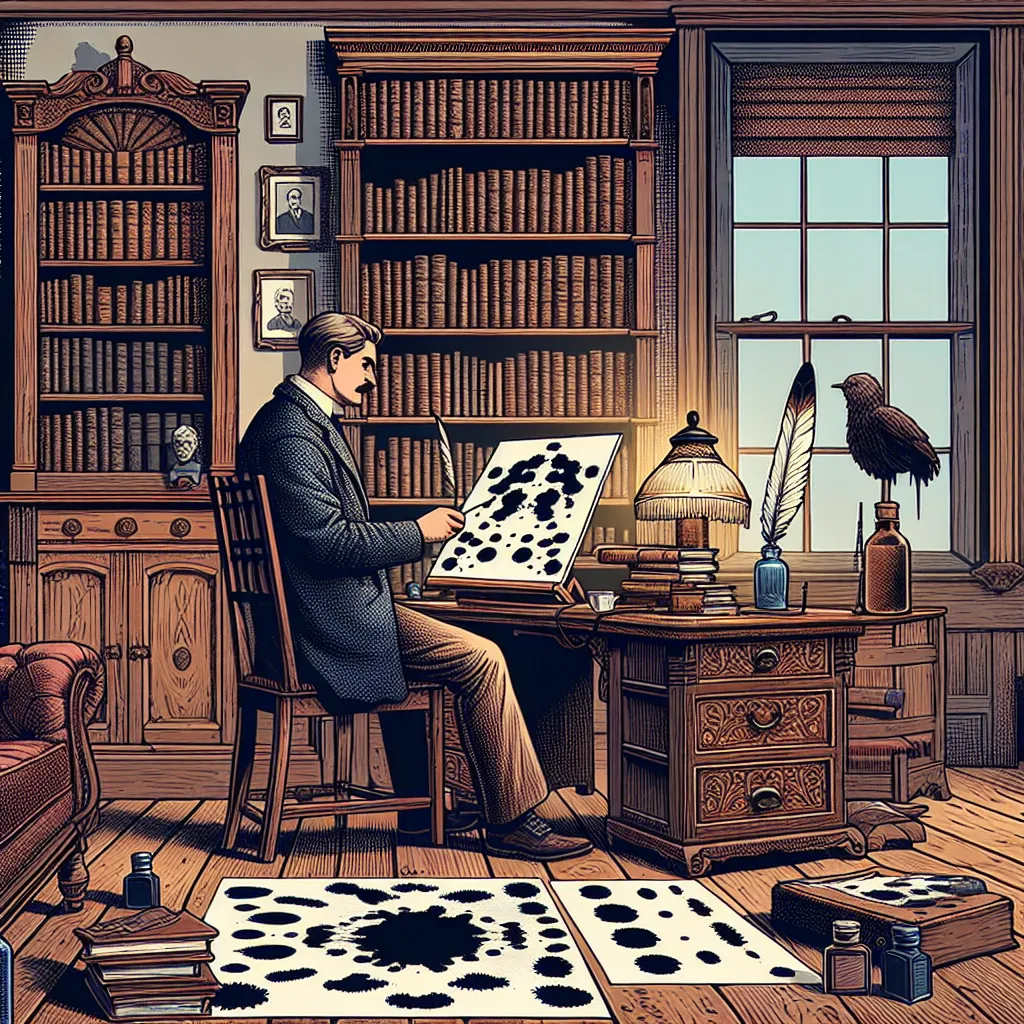Unveiling Rorschach: The Man Behind the Inkblot Test
The Rorschach test, also known as the inkblot test, remains one of the most iconic and enigmatic psychological assessments ever developed. The test is a cornerstone in the field of psychology, used by clinicians worldwide to explore the intricate workings of the human psyche. At the heart of this revolutionary tool was a Swiss psychiatrist, Hermann Rorschach, whose life and work have intrigued and mystified professionals and the public alike. This article delves into the life, legacy, and lasting impact of Hermann Rorschach, the man behind the inkblot test.
Hermann Rorschach was born on November 8, 1884, in Zurich, Switzerland. From an early age, he was fascinated by aesthetics and art, which would later influence his development of the inkblot test. Rorschach’s interest in human behavior and the mind led him to pursue a career in psychiatry, ultimately earning his medical degree from the University of Zurich. It was during his tenure at the famous psychiatric hospital in Herisau and later at the Krombach Hospital that Rorschach began his landmark work on the inkblot test.
The conception of the inkblot test was rooted in Rorschach’s observations of how different people perceived the same random ink patterns. The method, also called Rorschach’s experiment, was revolutionary at the time and was designed to evaluate an individual’s personality and emotional functioning. In 1921, Rorschach published ‘‘Psychodiagnostik,’’ which laid out the foundation for the inkblot test, officially referred to as the Rorschach Psychodiagnostic Test. Though Hermann Rorschach passed away just a year after his significant publication, at the early age of 37, his work would continue to influence generations of psychologists and psychiatrists.
The Rorschach inkblot test consists of a series of ten unique inkblots, each carefully designed to be ambiguous and open to interpretation. The individual taking the test is asked to describe what they see in each inkblot. The responses are then analyzed by a trained professional who interprets the person’s perception and projections to gather insight into their thought processes and personality traits. The test digs into the subconscious, as the inkblots serve as a canvas for the projection of internal conflicts and desires.
Administering the Rorschach test requires a deft hand, as the assessment’s subjective nature can lead to various interpretations. Hermann Rorschach’s scoring system includes looking at factors like the location of the focus in the inkblot, the determinants that guide the perception (such as shape, color, or texture), the content of the response (what the subject sees), and the originality of the response. All this data compiles a psychological profile that can be used for numerous applications, from identifying mental health issues to assessing criminal defendants.
The Rorschach test has garnered both acclaim and criticism throughout its history. Proponents of the test argue that it provides invaluable insights into an individual’s inner world that might not be readily accessible through other means. Critics, however, contend that the test’s subjective nature could lead to inaccurate and potentially misleading interpretations. Nonetheless, the Rorschach test has been an essential tool in clinical psychology, forensic assessment, and research for almost a century.
Hermann Rorschach’s legacy is not only cemented by the inkblot test but also by his contribution to the understanding of schizophrenia and other mental illnesses. His work on thought disorders and the psychoanalytic interpretations have provided valuable frameworks for subsequent research and treatment approaches. Rorschach’s inkblot test also opened doors to the broader field of projective testing, which includes techniques like the Thematic Apperception Test and sentence completion tests.
Despite the scientific achievements, there’s a rich and compelling story about Hermann Rorschach, the man himself. Described by his contemporaries as a visionary and a compassionate clinician, Rorschach’s passion for understanding the human mind was evident in the relationships he built with his patients and the detailed observations that characterized his work. His interest in art and the aesthetic side of his personality were inextricable from his scientific endeavors. Rorschach always appreciated the beauty in complexity, which was manifested both in his love for painting and his psychological inquiries.
Today, the Rorschach test is a cultural phenomenon as much as it is a psychological tool. References in movies, books, and art attest to its influence beyond the clinical realm. The inkblots have become synonymous with the mystery of the human mind and are instantly recognized by people worldwide, even those with no background in psychology.
Though the origins of the Rorschach test are nearly a century old, research into its efficacy and applications continues unabated. With advances in technology and psychometrics, contemporary researchers are finding new ways to standardize and validate the test, promising to keep it relevant for years to come. Moreover, the fusion of projective testing with modern imaging techniques and artificial intelligence could redefine its utility in psychological practice.
Recognizing and appreciating Hermann Rorschach’s contributions to psychology allows us to better understand the enigmatic world of personality assessment. As we unveil the life and genius of Rorschach, we grasp the profundity of his insights and the enduring relevance of his work. The inkblot test he developed is much more than a series of ambiguous images—it is a window into the complexities of the human condition.
Hermann Rorschach’s work serves as a reminder that psychology, at its core, is an amalgamation of science and art. It calls for quantitative analysis as much as it depends on qualitative interpretation. The man behind the inkblot test, with his dedication to exploring the intricacies of perception and thought, has left a legacy that challenges and inspires us to look deeper, to see beyond the surface, and to appreciate the profound interplay of the conscious and unconscious that shapes who we are.
In conclusion, the Rorschach inkblot test stands testament to Hermann Rorschach’s brilliance as a psychiatrist and his inventive spirit. His pioneering approach to psychodiagnosis paved the way for new avenues in understanding human personality and mental health. It has become an essential part of the psychological assessment toolbox, as well as an iconic symbol of the enduring quest to comprehend the depths of the human psyche. Hermann Rorschach’s story is as captivating as the test he created, and as we peel back the layers of his life, we gain invaluable insight into the enduring legacy of the man behind the inkblots.



Leave a Comment